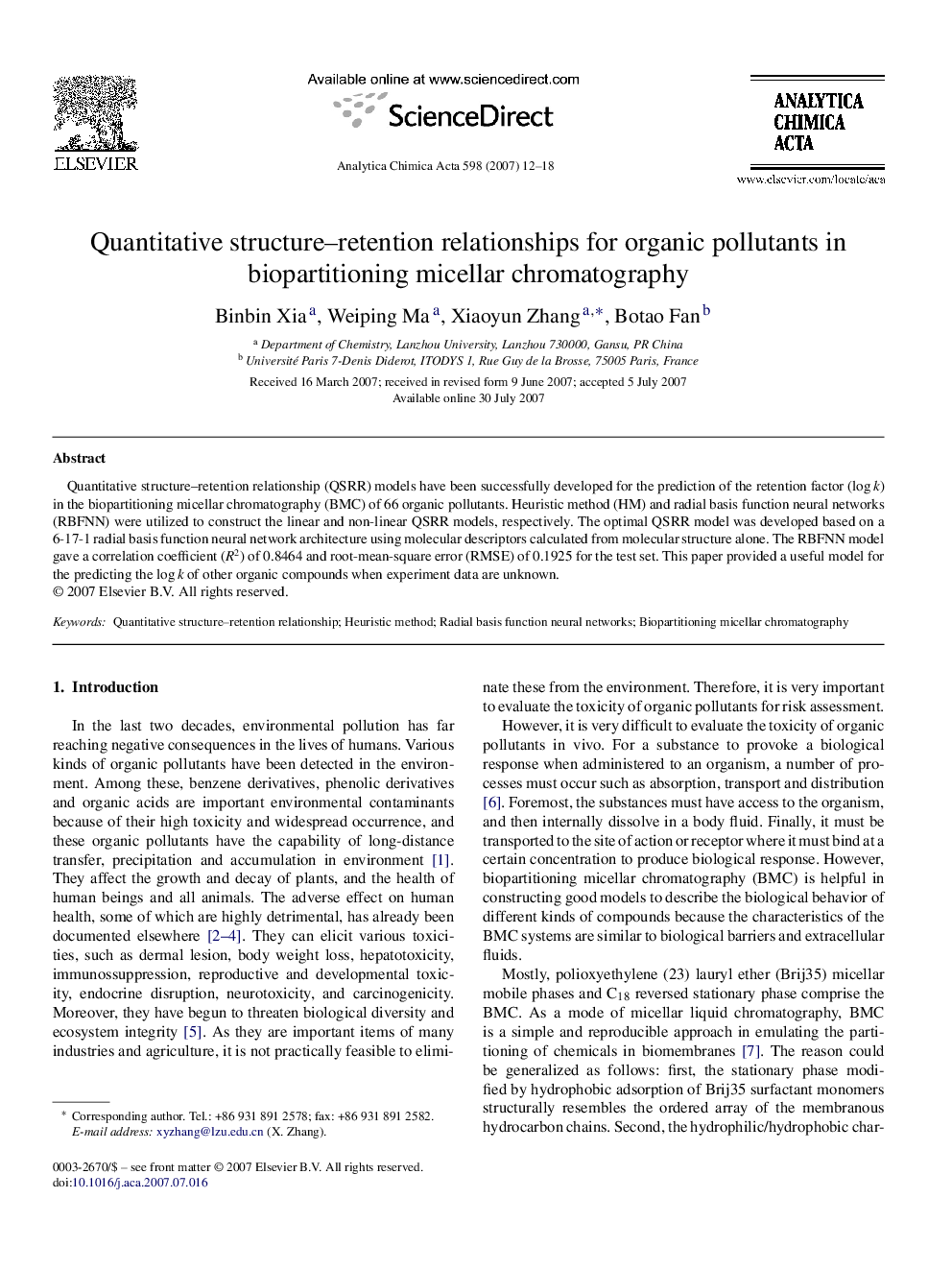| Article ID | Journal | Published Year | Pages | File Type |
|---|---|---|---|---|
| 1170084 | Analytica Chimica Acta | 2007 | 7 Pages |
Quantitative structure–retention relationship (QSRR) models have been successfully developed for the prediction of the retention factor (log k) in the biopartitioning micellar chromatography (BMC) of 66 organic pollutants. Heuristic method (HM) and radial basis function neural networks (RBFNN) were utilized to construct the linear and non-linear QSRR models, respectively. The optimal QSRR model was developed based on a 6-17-1 radial basis function neural network architecture using molecular descriptors calculated from molecular structure alone. The RBFNN model gave a correlation coefficient (R2) of 0.8464 and root-mean-square error (RMSE) of 0.1925 for the test set. This paper provided a useful model for the predicting the log k of other organic compounds when experiment data are unknown.
